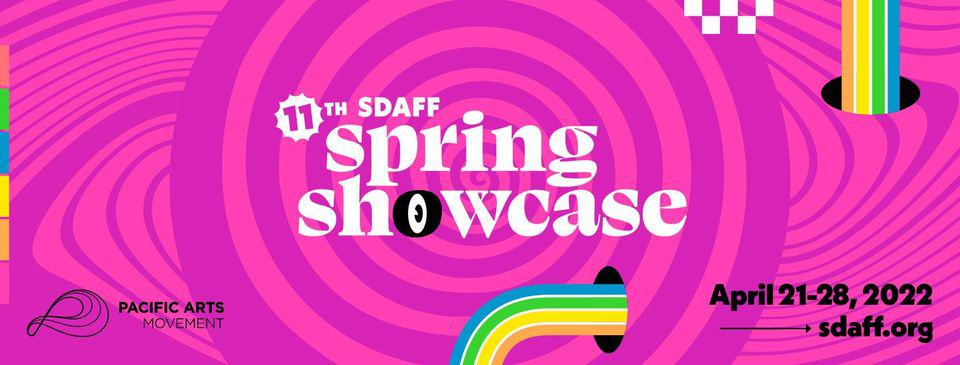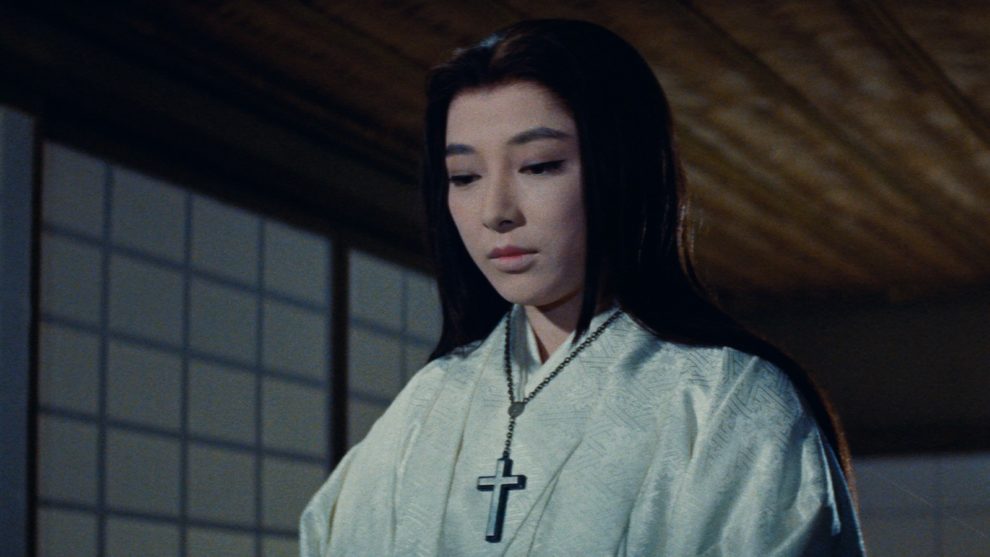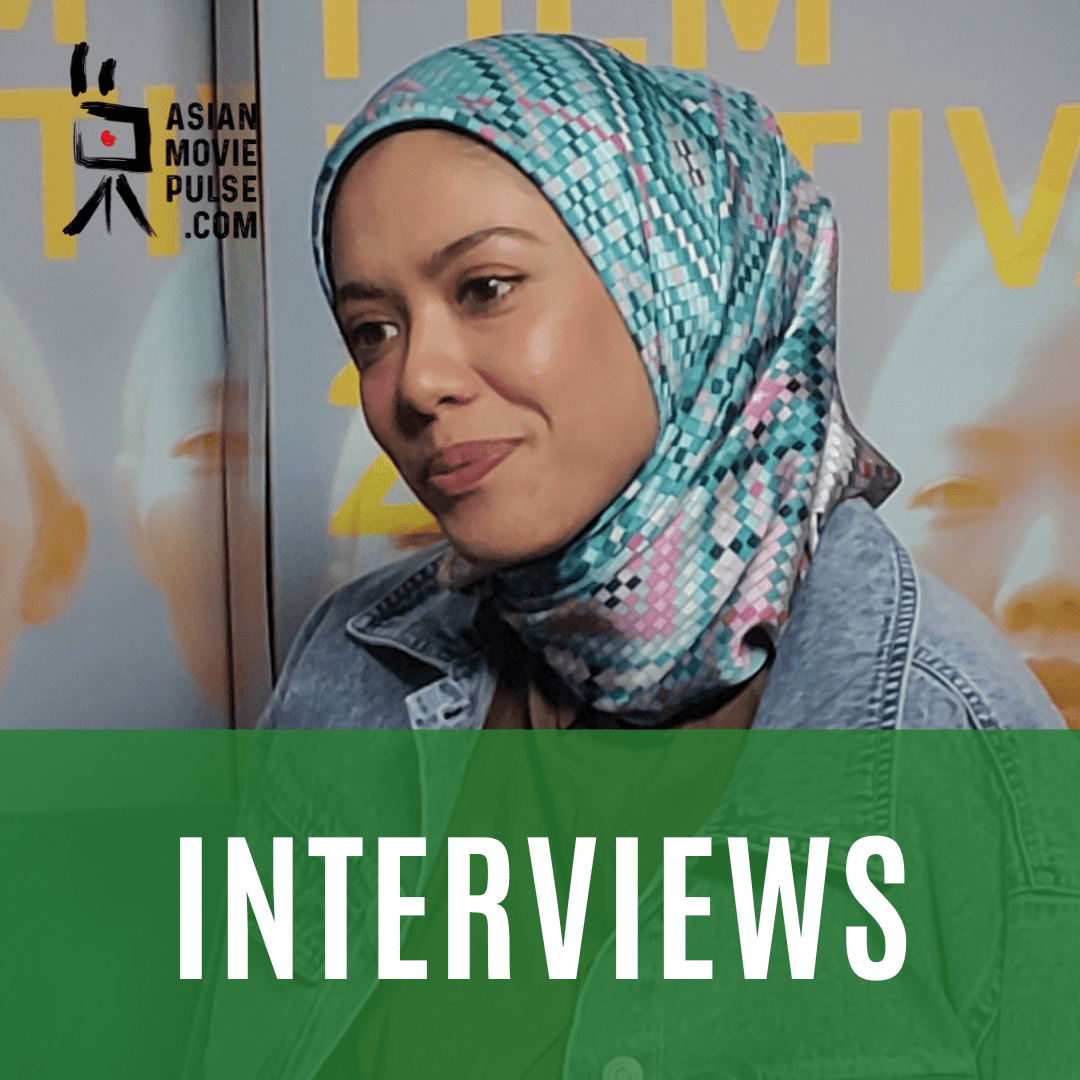Although she would go on to make feature films as an actress, Kinuyo Tanaka's last project as a director would be the 1963 jidaigeki “Love Under the Crucifix”, a work based on the novel “Ogin-sama” by Toko Kon. At the same time, given her development as a filmmaker, this is truly an interesting climax to a career which saw her progressing more and more, developing her skills, especially when it comes to cinematic storytelling. Additionally, the themes that defined her previous works such as “Love Letter” and “Forever a Woman” also found a fitting conclusion in a feature that, even though it was not set in the present as her other movies, it certainly made a very relevant point about gender roles within Japanese society as well as the conflict between duty and desire as expressed in the story of the main characters.
“Love Under the Crucifix” is screening at the 11th SDAFF Spring Showcase

The story begins in 1587, as the Japanese lords were threatened by the growing influence of Christianity and an increasing number of them being converted to this new faith coming from Europe. However, as a means to create a feeling of unity among the many provinces, Sen no Rikyu (Nakamura Ganjiro II), a nobleman with a profound knowledge of tea rituals, is asked by a military commander to have his daughter, Ogin (Ineko Arima) to be married to a rich merchant named Mozuya (Hisaya Ito). Having instructed him in the tea ritual and finding him a very respectable man, Rikyu does not object, but eventually makes it his daughter's decision whether she will marry him or not. Given her affection for Ukon Takayama (Tatsuya Nakadai), also a former student of her father and a firm supporter of Christianity, she seeks his approval and possibly his love for her, which he refuses, believing in his duty to remain pure and without sin.
Two years later, Ogin has become the merchant's wife, but the marriage is unhappy and without children. When Mozuya meets Ukon during a tea ceremony, seeking to negotiate a new trade agreement, although he is well-aware of the days of Christianity being numbered in Japan, Ogin feels attracted to the young man once more. However, at one point ,both of them finally see an opportunity to give in to their feelings for each other, resulting in a catastrophe for them and their families.
Similar to, for example, “Love Letter”, Tanaka shows both of her main characters, Ogin and Ukon, as prisoners of certain restraints, of faith and society. From the first time we see these two together, there is an invisible wall between them, with Ukon shutting down his feelings for the young woman by citing concepts such as purity and sun, setting up the foundation of what will be their ultimate downfall. Both Nakadai and Arima excel in their scenes together, highlighting the conflict of their characters of having to choose between their duty and their desire, making the titular “love under the crucifix” a difficult goal to achieve.
Whereas other directors have used the historic setting and costumes of the jidaigeki as a means to explore greed, hybris and jealousy, in the case of Tanaka's final feature it is the importance of rituals and concepts in favor of feelings and peace. Apart from the implications of Christianity and its role within the history of Japan, much time is spent showing the strict routine of the tea ceremony, with most of the encounters in the feature following the ritual. Masahige Narusawa's screenplay seemingly wants to connect the idea of the ceremony to the way people, especially women, must follow certain expectations or face punishment for disobedience. When Ogin witnesses another woman on her way to be crucified, she learns of her crime of not wanting to commit adultery with a lord, creating one of the many instances of foreshadowing in “Love Under the Crucifix”.
In conclusion, “Love Under the Crucifix” is a terrific final feature for Kinuyo Tanaka as director. Using the structures of the jidaigeki, she tells a compelling story about the conflict of duty and desire, with Tatsuya Nakadai and especially Ineko Arima giving great performances as two people having to decide between their feeling for each other or obeying to the set of rules imposed onto them.
















